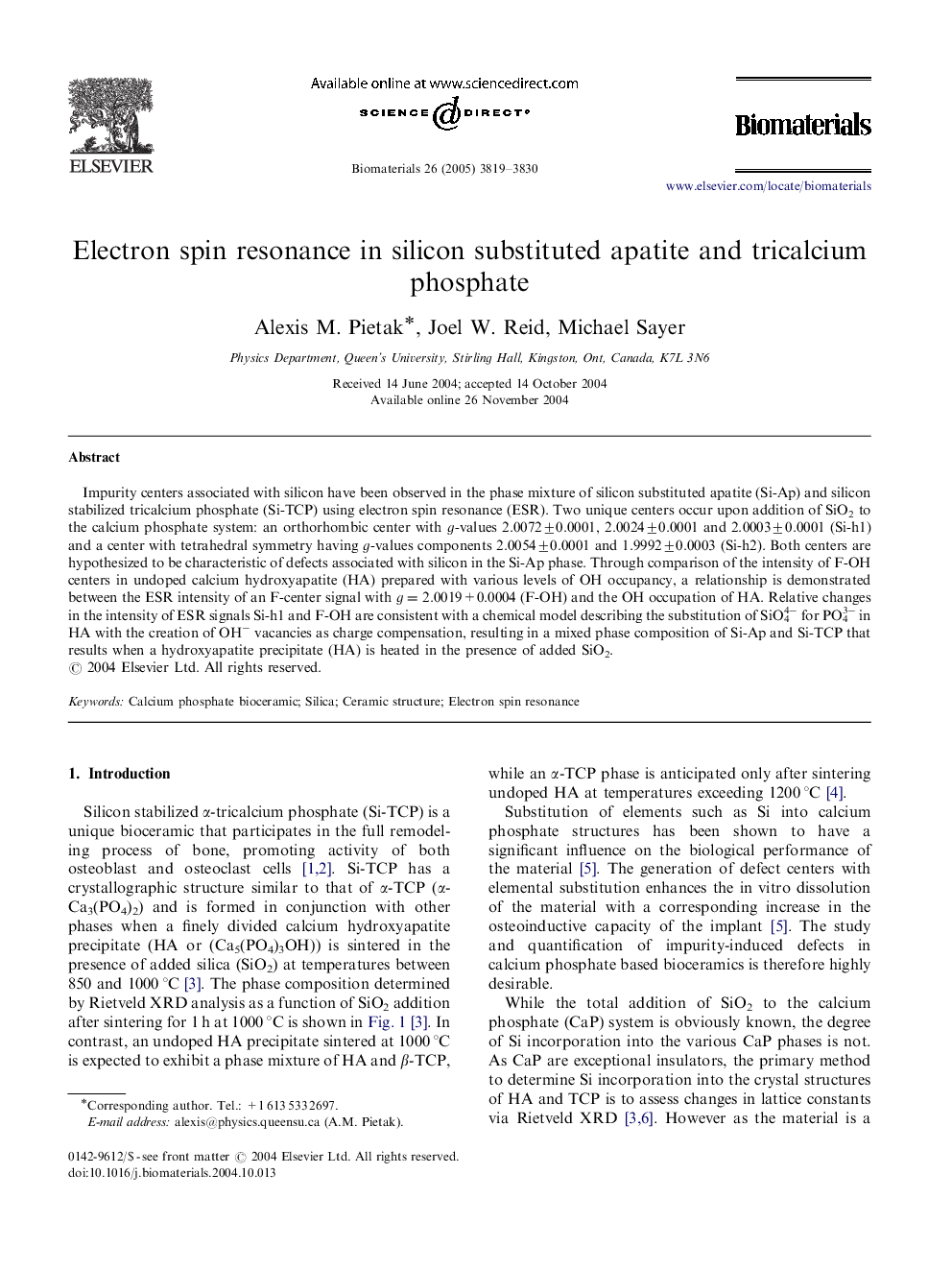| Article ID | Journal | Published Year | Pages | File Type |
|---|---|---|---|---|
| 12484 | Biomaterials | 2005 | 12 Pages |
Impurity centers associated with silicon have been observed in the phase mixture of silicon substituted apatite (Si-Ap) and silicon stabilized tricalcium phosphate (Si-TCP) using electron spin resonance (ESR). Two unique centers occur upon addition of SiO2 to the calcium phosphate system: an orthorhombic center with g-values 2.0072±0.0001, 2.0024±0.0001 and 2.0003±0.0001 (Si-h1) and a center with tetrahedral symmetry having g-values components 2.0054±0.0001 and 1.9992±0.0003 (Si-h2). Both centers are hypothesized to be characteristic of defects associated with silicon in the Si-Ap phase. Through comparison of the intensity of F-OH centers in undoped calcium hydroxyapatite (HA) prepared with various levels of OH occupancy, a relationship is demonstrated between the ESR intensity of an F-center signal with g=2.0019+0.0004 (F-OH) and the OH occupation of HA. Relative changes in the intensity of ESR signals Si-h1 and F-OH are consistent with a chemical model describing the substitution of SiO44− for PO43− in HA with the creation of OH− vacancies as charge compensation, resulting in a mixed phase composition of Si-Ap and Si-TCP that results when a hydroxyapatite precipitate (HA) is heated in the presence of added SiO2.
